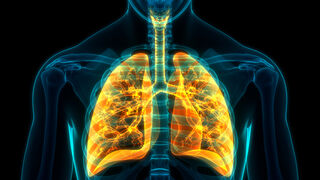Health
Hacking Mental Health Through Breath
The key mechanisms of breathing, and the benefits, explained.
Posted March 26, 2021 Reviewed by Gary Drevitch

by Aleksandra Goncharova, Ph.D.
Freedivers, the U.S. Navy SEALS, professional athletes, actors—they all train their breath to enhance physical and mental endurance. For the rest of us, there’s a “we-told-you-so” echoing in the air. Going back at least 5,000 years, our ancestor healers have emphasized the therapeutic benefits of breathwork practices like Pranayama. With a rediscovery of these methods in recent decades, today’s scientific research community is bridging modern science with ancient wisdom and finding that breathing interventions can alleviate many physical and mental health conditions.
But is it necessary to control something as automatic and fundamental to survival as breathing? A bit shallower or deeper, or a bit slower or faster – could variations in how we breathe really make a difference? While the results of scientific studies point to an unequivocal “YES,” breathing retraining doesn’t inspire buy-in quite like a pill does and recommendations to try it for therapeutic benefit often fall on deaf ears (and noses).
Perhaps understanding the basic neurophysiology behind breathing practice and its benefits is key to giving it an honest try. Research suggests that breathing interventions…
Rebalance your autonomic nervous system.
When anxious, we’re a bundle of nerves, with butterflies in our stomachs, our hearts skipping a beat. To calm down we’re advised to take a deep breath. These familiar turns of phrase accurately reflect that our stress response is rooted in the workings of the autonomic nervous system, which regulates heartbeat, digestion, breathing, and other involuntary bodily functions. Its mobilizing, sympathetic branch preps us for action, especially in the face of stressors and fight-or-flight situations. Its calming, parasympathetic branch relaxes, heals, and restores. Chronic stress and inadequate rest so endemic to modern living bring these divisions of the nervous system out of balance. Sympathetic over-activation is associated with many psychiatric and chronic health conditions. Stuck in sympathetic overdrive, we experience chronic anxiety and worry, struggling to relax even when we’re desperate to. In insomnia, for example, sympathetic over-activation leaves sufferers feeling more like they’re fighting-or-fleeing from charging lions than counting sheep as they try to drift off.
Researchers attribute the benefits of breathing exercises largely to their role in rebalancing the nervous system. Given how critical breathing is for survival, the brain is said to prioritize incoming respiratory messages on the bidirectional highway between mind and body. Capitalizing on this and the fact that breathing is a uniquely voluntary autonomic function, we can influence activity in the nervous system by controlling the breath. Breathing slowly and deeply stimulates a parasympathetic response while inhibiting sympathetic activity. Heart rate and blood pressure decrease and activity in the amygdala, the fear center of the brain, is reduced. The cascade of neurophysiological changes that take place elicits a relaxation response. Beyond immediate relaxation effects, more notable healing of the nervous system and reductions in worry and anxiety can be achieved through regular breathing practice.
Parasympathetic activation reduces activity in the worry center of brain and slows brainwave activity, promoting restorative sleep. In ADHD, it reduces anxiety and restlessness, while simultaneously activating parts of the brain responsible for attention and behavioral control. Biofeedback games like “ChillFish” are a fun way for children to learn breathing exercises, which have been shown to increase activity in brain regions critical for attention, memory, and executive functioning when practiced regularly.
Improve vagal tone and functioning.
Parasympathetic health depends largely on the tone and functioning of the longest cranial nerve in the body – the vagus nerve. This complex nerve bundle, weaving from the brainstem to the gut, helps us maintain homeostasis and is said to play a role in social behavior and competency. Low vagal tone, often caused by chronic stress and trauma, is associated with depression, anxiety, and insomnia, as well as with chronic inflammation and a number of digestive and autoimmune disorders. Therapies targeting the vagus nerve usually entail some form of vagus nerve stimulation (VNS). This includes FDA-approved treatment for refractory epilepsy and depression, which involves the delivery of electrical impulses to the vagus nerve, but also breathing practices which can heal and tone the vagus nerve, resulting in improved coping and emotional wellbeing.

Increase CO2 tolerance.
Counterintuitively, less is more when it comes to breathing. Many of us are actually chronic over-breathers, inhaling too much oxygen and exhaling too much carbon dioxide, often due to habitual mouth breathing and stress-induced rapid, shallow breathing. Although CO2 is a waste gas, its presence in the blood is vital for oxygen to be effectively circulated and released into cells and tissues. Our bodies can adapt to low levels of CO2 in the blood, but this can lead to an oversensitive “suffocation alarm”: the slightest increase in CO2 in the blood and our brain’s fear center makes a desperate plea for an inhale. The result? A vicious cycle of breathlessness and compensatory over-breathing.
Hyperventilation syndrome and CO2 hypersensitivity are associated with panic and anxiety disorders, as well as insomnia, hypertension, and chronic fatigue. CO2 tolerance can be built up through breathing habits and techniques like nasal breathing, slow breathing, and breath-holding. Increases in CO2 tolerance reduce anxiety and improve breathing during sleep, resulting in improved energy levels during the day. Cognitive functioning is also improved through dilation of the blood vessels, better circulation, and oxygenation of the brain
Increase heart rate variance.
Good health is reflected in a variable, and not steady, heart rate. Heart rate variance (HRV) – the measure of fluctuations in heart rate – is frequently used to assess vagal functioning. Inhalation increases our heart rate, while exhalation slows it. Like the almost too responsive gas and brake pedals in a new car, the healthy vagal nerve flexibly keeps up with these respiratory inputs, resulting in higher HRV and resilience amidst stressful experiences. Lower HRV at pre-deployment has been found to be a risk factor for PTSD among US Marines, making HRV biofeedback a component of pre-deployment stress inoculation training.
Low HRV is implicated in anxiety and mood disorders, PTSD, ADHD, eating and substance abuse disorders, and even bipolar and schizophrenia. Coherent breathing is a great way to increase HRV by slowing breath to at an optimal rate (~6 breaths per minute) at which electrical rhythms of the heart, lungs, and brain are brought into synchrony. Increasing HRV not only improves our stress response systems, but also higher-order capabilities like sustained attention, emotion regulation, and even altruism and compassion through activation of the prefrontal cortex. Popular fitness tracking devices like the Fitbit provide HRV metrics and can help you track progress.
(Re)learning to breathe
There are hundreds of breathing techniques to choose from and it can be tough to figure out where to start. Popular ones to Google and try are Square, 4-7-8, and alternate nostril breathing techniques. Starting today you can simply get into a habit of observing your breathing patterns. As you become more mindful of your breath, try to shift from mouth to nasal breathing, and from chest to diaphragmatic breathing. Slow your breathing rate and extend your exhales.
Breathing exercises are often attempted half-heartedly in moments of acute stress. Desperate efforts to relax not only prove ineffective, but can even exacerbate symptoms. To get genuine, short and long-term benefit from your breathing practices, they need to be done correctly and regularly. The books listed below are great forays into the fascinating art and science of breathing, should you decide to embark on the journey.
Happy breathing!
Recommended Books
- Breath: The New Science of a Lost Art by James Nestor
- The Healing Power of the Breath by Richard P. Brown, MD and Patricia L. Gerbarg, MD
- The Oxygen Advantage: The Simple, Scientifically Proven Breathing Techniques of a Healthier, Slimmer, Faster, and Fitter You by Patrick McKeown
- Light on Pranayama: The Yogic Art of Breathing by B.K.S. Iyengar
Aleksandra Goncharova, Ph.D., LPC, is a NY and NJ licensed professional counselor.




